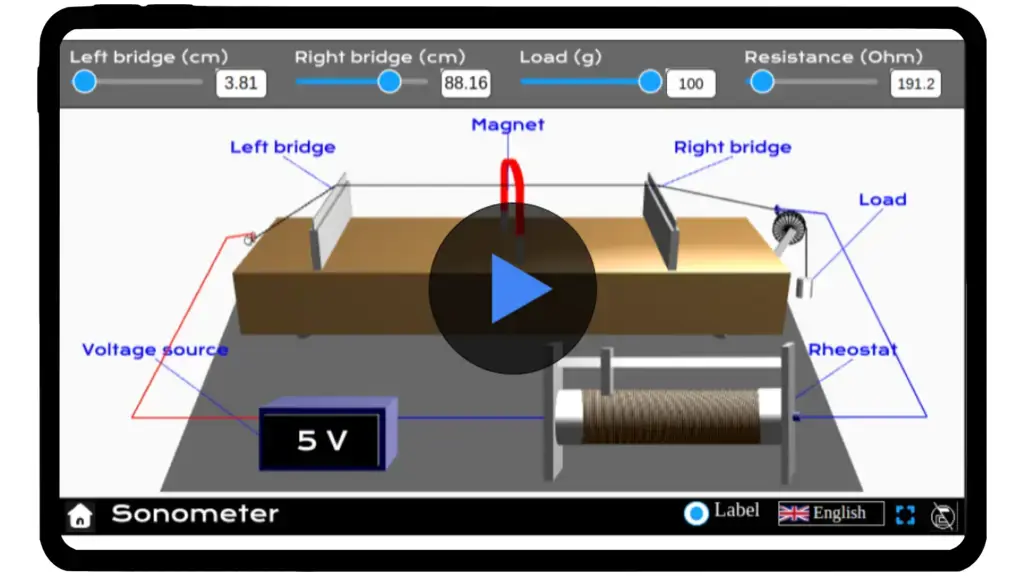Sonometer simulator
Explore sound and vibration principles with our interactive Sonometer Simulator. Adjust tension and length to study resonance and frequency!
Sonometer- Figuring out AC current frequency using electromagnet
Sound and vibration shape the world around us, from musical instruments to engineering applications. Ever wondered how tension and length affect frequency? Step into the world of sound with our interactive Sonometer Simulator. Adjust the tension, experiment with different lengths, and observe how resonance and frequency interact in real time. Explore how resonance helps in figuring AC current frequency —start your journey today!
$$ f = \frac{1}{2L} \sqrt{\frac{T}{\mu}}$$
Mathematical description
This formula tells how to find the frequency of a vibrating string.
where:
- \( f \) is the natural frequency of the string
- \( L \) is the vibrating length
- \( T \) is the tension
- \( \mu \) is the mass per unit length of the string,
Tutorial video:
Sonometer Simulation
Take a quick spin through our simulator!
